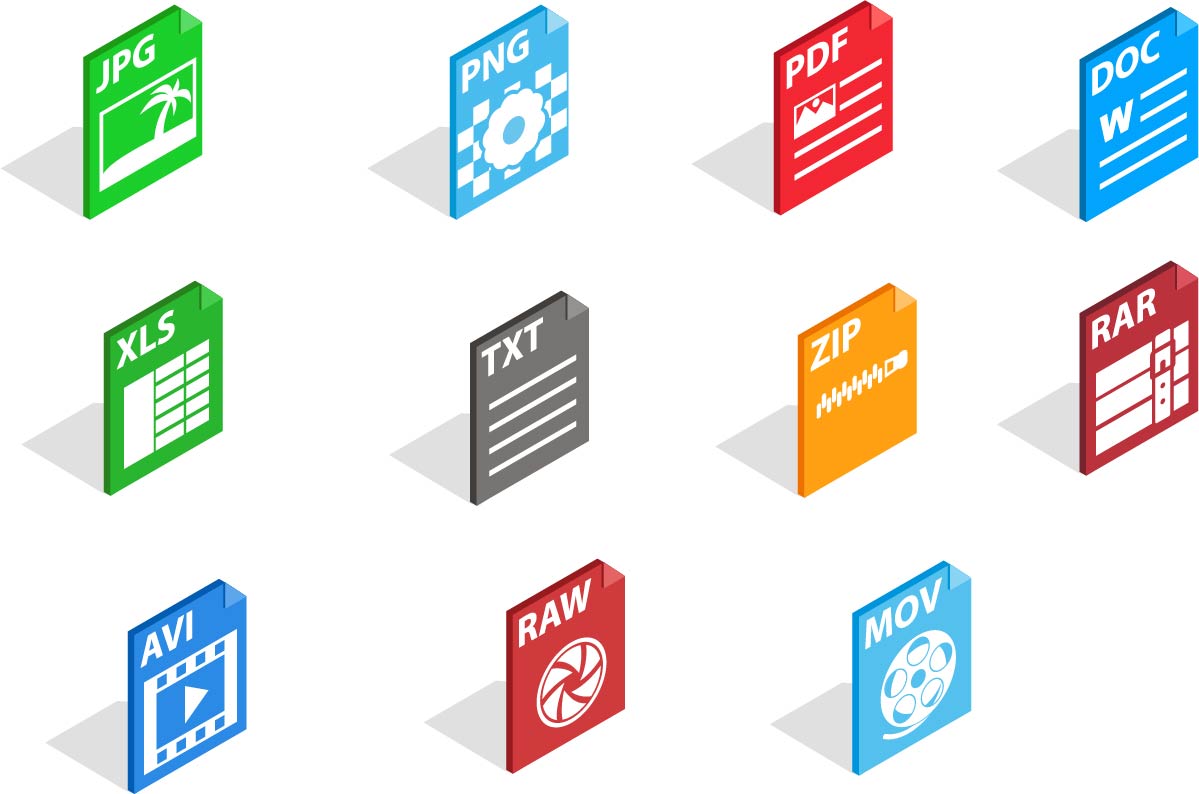Here at Printchain Portmarnock we’re keenly aware that not everyone is a techie, and that unlike us, the vast majority of people haven’t spent years of their lives learning the ins and outs of modern printing techniques.
And yet, if you want something printed, at some point you’re probably going to have to send us some computer files to get the job done.
Whether you’re sending us those files by email, dropping in a USB stick in person, or even sending them online (please ask us how), this is a simple guide to how to get the best quality out of the files you have, and thus speed up the print job you’ve ordered.
(If you don’t have time to read the entire article, we can sum it up as follows: send us a PDF because it’s the ultimate “what you see is what you get” file type.)
What are the types of files I can send to a printer?
There are two types of file that are used in modern printing: bitmap and vector.
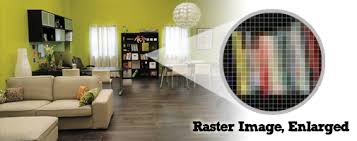
What is a bitmap file?
Also known as a ‘raster’ file, this sort of computer file is a picture that’s been divided up into tiny squares (these days called ‘pixels’), each of which has a different colour and brightness. Put all the little squares together and you end up with the full picture.
This file type is most often used for images with a lot going on in them, such as photos. The disadvantage to a bitmap type file is that you can’t increase the size of the picture beyond its original size without it going blurry. They’re also not great for things with crisp lines like diagrams or logos.
What is a vector file?
This is a file that is actually a set of instructions that tell your computer how to draw the shapes that make up a picture. This has the advantage that no matter how large or small your design is printed, you’ll always get the best possible sharpness (also known as ‘resolution’).
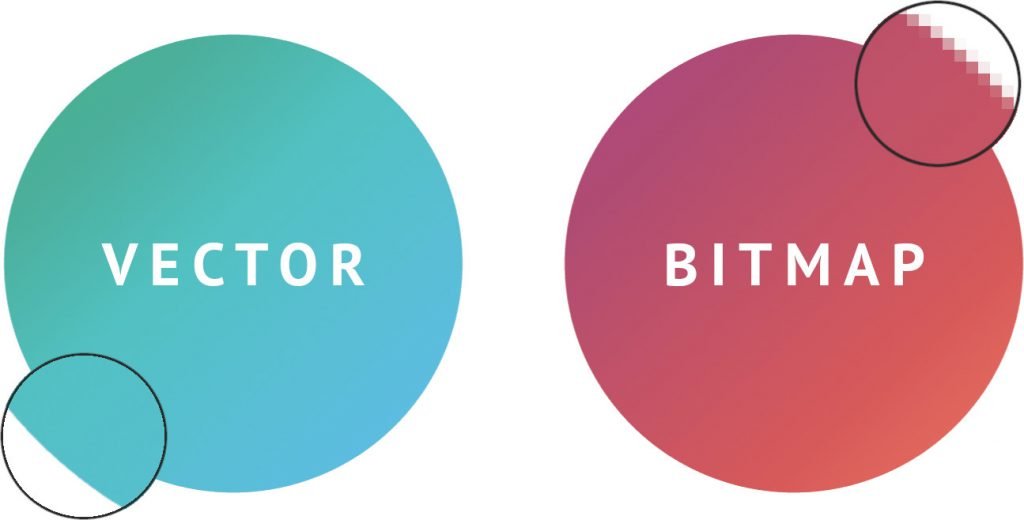
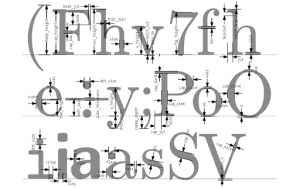 The most famous type of vector file is a font – for example Times New Roman or Helvetica – which in reality is just a set of rules that your computer can use to draw letters and numbers perfectly, no matter how small or large you want them.
The most famous type of vector file is a font – for example Times New Roman or Helvetica – which in reality is just a set of rules that your computer can use to draw letters and numbers perfectly, no matter how small or large you want them.
So if they’re so good, why not use vector files for everything? Well the problem is that the number of instructions required to draw something really complicated, like a photo, painting, scan, etc. would be so enormous that it would make a vector version of the file unusuable – or to keep the file size lower you would have to lose some detail.
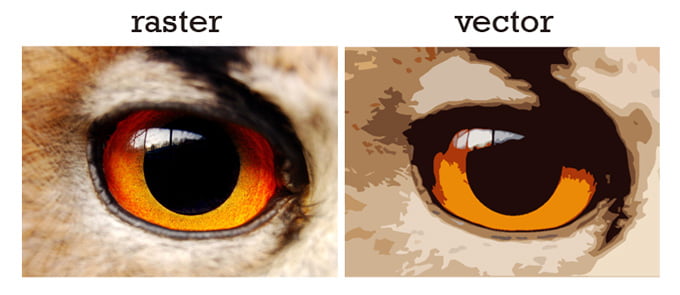
So vector images are generally suitable for simpler designs – stuff like logos and diagrams always come out much better when a vector file is used – but they aren’t really appropriate for complicated pictures like photos.
To create a successful print job in the best possible way, we therefore need to use both vector and bitmap images in the right place, for the right type of image. Simple as that!
Now we know the difference, what are the best files to use for each type of image?
What are the common bitmap file types used in printing?
JPEG
The most famous of all the filetypes, this is the type of image that you’ll find all over the web, and that your mobile phone camera takes. It’s designed to reduce the amount of memory used by the file, so you can do things like emailing it or putting it on a USB stick.
If you want to print a photo, scan, or painting, then send an unedited version of the JPEG (also known as JPG) to your printing company, direct from your camera, phone, or computer.
BMP
Literally standing for ‘bitmap’, this is an old-fashioned file type that faithfully records a lot of detail about every single square on the picture. As a result, BMP files tend to be very, very big, and might not be suitable for emailing. Nevertheless we can still work with them.
PNG
This is a fancier version of a JPEG that can also handle having a transparent background. Often used by companies for logos, so that the logo can be printed on any type of background and the background will be visible behind it (even though a vector file would be even better because with a PNG you can never make the image larger than the original, only smaller).
GIF
These days GIF files are mainly only used for online animations. They can be printed but they’re rather old fashioned (the file type is so old that it was invented before the worldwide web!) and very low quality. Not recommended for printing.
TIFF
This is similar to a BMP file but has other functions. It is the format most preferred by printing companies, but because it has so much detail in it, it also makes for enormous file sizes. If you’re not making a giant billboard or printing a glossy magazine like Vanity Fair, for most purposes a JPG file will suffice for your photos.
What are the common vector file types used in printing?
This is probably the most famous of all the vector files, and most of us will have encountered PDFs at some point in our lives, usually in the form of a document that you can’t really edit. It stands for “portable document format”.
If a PDF is generated using printing software (like Microsoft Publisher or Adobe InDesign), the designs and fonts will be saved as vectors will therefore print perfectly at any size. However to confuse matters, a PDF can also contain bitmap images as well – you will probably have seen this when someone’s turned a scanned document into a PDF, or embedded some photos from the internet.
EPS
This is the “universal standard” vector format, which means it can be understood by any printing software that exists. If you want to send some graphics to a printer and want to be guaranteed that it will print perfectly, this is the file to use.
If you have employed a graphic designer to create a logo etc. you should always ask them for the EPS version of the design you’ve paid them for.
SVG
This is a modern, web-friendly vector file that is 100% vector only. It contains instructions on angles, colours, etc. and can allow your image to be printed – or shown on a website – at any size and will always be perfect for that size. It also has a very small file size.
What are some programs that can be used to create files for printing?
Microsoft Word
While it’s not the handiest programme for your printer to use, you can send files in this format. Probably better would be if you use the “Save as…” function to save it as a PDF (Word can do this).
What it’s NOT good for is to send pictures to your printing company. Far better to send the pictures directly in their original format – JPG, TIFF, etc.
Microsoft Publisher
This is similar to InDesign but would also be familiar to you if you use Microsoft Word. If you’re not sure that your printer has this software, you can always save your Publisher file as an EPS or PDF instead and they will be able to use that.
Adobe InDesign
This is the “gold standard” of digital publishing and is used by most professional printing outfits. If you have InDesign yourself you can send the files (.indd) directly the the printer. Otherwise, output them as a PDF or EPS.
Adobe Illustrator
This is the most popular program for creating or editing vector files.
Adobe Photoshop
This is the most popular program for creating or editing bitmap files. As with all the Adobe products, Photoshop is very expensive. However there is a stripped-down version for much less money called Adobe Elements.
Adobe Reader
This software allows you to see a PDF, although you can’t use it to edit the file. The more elaborate version of this is called Adobe Acrobat, which also allows you to perform some edits on the file.
What’s the easiest way to send files to be printed?
Without a doubt if you really want to send something to be printed that will look exactly the same on paper as it does on your screen, and includes vector and bitmap files, send us a PDF!
We hope this guide has helped you understand the main file types used in printing.
We know that there’s a lot to take in here, which is why the personal touch is always better as you can be guided directly – or even use our graphic design services so you don’t ever have to think about it! Call or email today to learn more.
